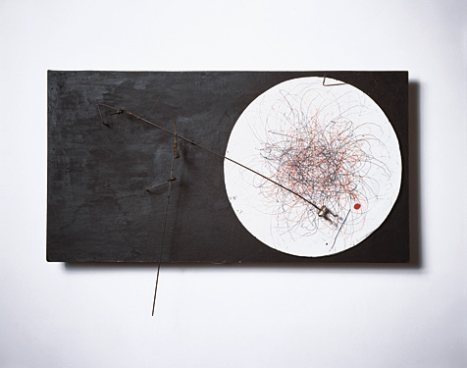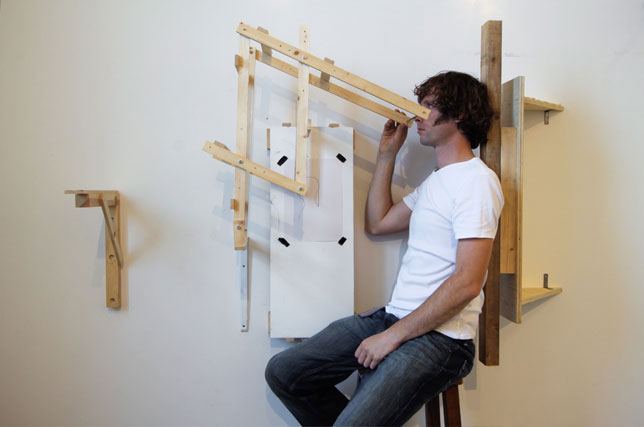Lecture 3: Project development (1) Drawing
Lecture 3 and 4 will be a gateway to your own project development by bridging the previous learning with projects with specific themes: drawing and storytelling. By trying out small-scale projects with the context and examples given, inspiration for future work could be drawn.
- Drawing with linkages
- Drawing tools
- Traces of linkages
- Drawbots
- Drawing mechanisms
- Read/Watch
- Exercises
- Slides
Drawing with linkages
Among many interesting things that linkages can do in art and design, drawing is definitely one of the most popular and beautiful things to try. The close relationship between linkage and drawing can be found even in ancient Greece’s drawing tools. This tradition continues as many contemporary artists have made the best of the drawing capacity of linkages.
(left) Jean Tinguely, 1955, Machine à dessiner No. 3. Image source: https://www.tinguely.ch/
(right) Will Cruwickshank’s Portrait drawing machine. Image source: https://willcruickshank.net/
Drawing tools
Historical drawing tools used in architecture and mathematics are made with linkages. They were used to divide lengths, draw curves as well as copy and magnify drawings.

Van Schooten mechanism for constructing an ellipse (left) and for constructing a parabola (right).
Traces of linkages
The repetitive curvy traces that linkages leave behind vary depending on the design of the mechanisms and are beautiful in their own right irrespective of their meaning.

Drawbots
Drawbots are a kind of automated drawing machines or drawing robots. Artists often combine drawing mechanisms with their kinetic sculptures and robotic artworks in order to visualize motion.
Drawing mechanisms
There are often-used mechanisms for drawing and below are examples. More explanation and examples can be found in the lecture slides.
- A pantograph copies and magnify a drawing.
- An Ellipsograph draws an ellipse.
- Drawing straight lines was an important topic in engineering and there are a few mechanisms for that.
- A harmonograph or a pintograph draws repetitive curves with a periodic movement.
- A spirograph makes varied geometric circular shapes. (You might be familiar with a toy called Spirograph with a toothed circle but it can be made also with linkages)

Read/Watch:
- Read
- Maya Hambly (1988), Drawing Instruments 1580-1980, Sotheby’s Publications
- Susan Piedmont-Palladino (2007), Tools of the Imagination: Drawing Tools and Technologies from the Eighteenth Century to the present, Princeton Architectural Press
- Historical Mechanisms for Drawing Curves, Daina Taimina, Cornell University
- How to draw a straight line: A lecture on linkages, a book by Kempe, A. B.
- DrawBot resources and links by Maker Block
- Web app
- Plotter
- Pantograph
- More to read/watch and download
Exercises:
- Find more drawing+mechanism examples that you find inspiring.
- Design your drawing mechanism and produce at least three drawings.
- Submit a photo or a video of the mechanism and drawings produced, along with a brief explanation.

